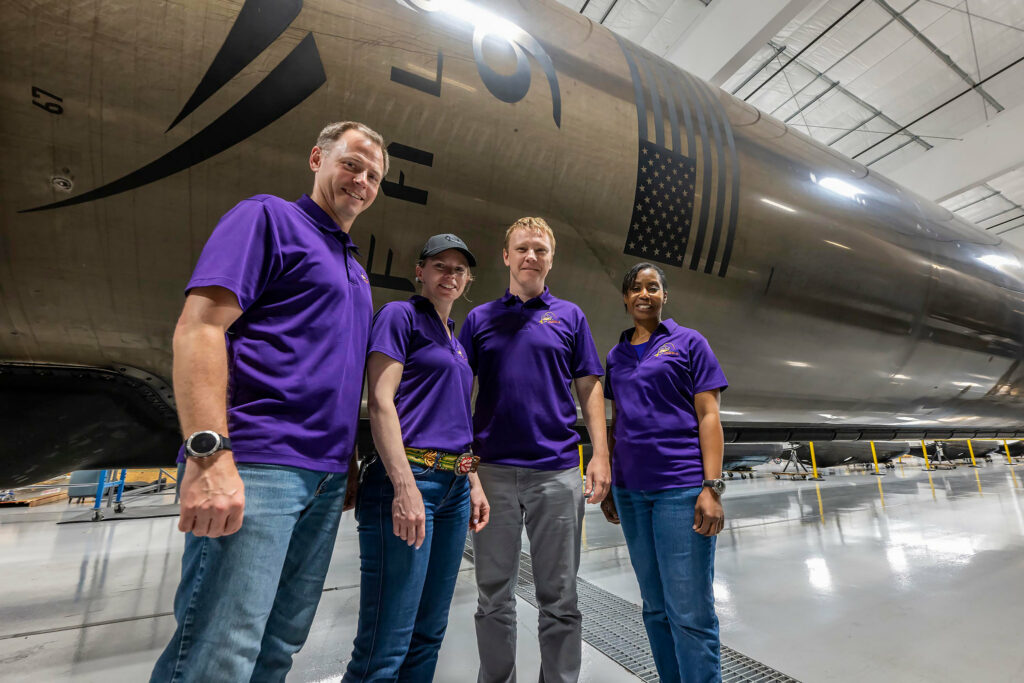WASHINGTON — NASA is pressing ahead with a mid-August launch of the next Crew Dragon mission while delaying the first operational flight of Starliner.
At a July 26 briefing, NASA officials said they were targeting no earlier than Aug. 18 for the launch of the Crew-9 mission to the International Space Station. That date had been in question after an upper stage anomaly on a Falcon 9 Starlink launch that grounded the rocket for 15 days.
At the briefing, held before the rocket’s successful return to flight early July 27, NASA praised SpaceX for being “very transparent” about the investigation into the incident and planned changes to the upper stage to prevent the cause of the anomaly — a crack in a sensor line that allowed liquid oxygen to leak — from occurring again.
That schedule, said Steve Stich, NASA commercial crew program manager, will depend on a test-firing of the upper stage to be used on the Crew-9 launch scheduled for around July 30. That test will “check out some of the new modifications that the vehicle will have a result of the anomaly,” he said.
“We’re going to go through a rigorous certification of that,” he said of the changes to the upper stage, including both hardware changes and modifications to software that will no longer use data from the removed sensor. “We’ll go through that and take it to the program control board, and we’ll baseline that change for Crew-9.”
He added that NASA will have the benefit of several Falcon 9 launches with the change ahead of Crew-9. SpaceX has already performed three launches, each carrying Starlink satellites, with the upper-stage modification. There are more on the manifest, including the launch of a Cygnus cargo spacecraft to the ISS as soon as Aug. 3.
At a separate briefing July 26, the four-person crew of Crew-9 — NASA astronauts Zena Cardman, Nick Hague and Stephanie Wilson and Roscosmos cosmonaut Alexsandr Gorbunov — said they had no reservations on launching on a Falcon 9 weeks after the upper stage anomaly.
“I’m extremely confident in the team and the approach they’ve taken,” said Hague, the pilot for Crew-9 who also experienced an in-flight abort on a Soyuz mission to the ISS in 2018. “I’m excited to strap onto the rocket when the team decides it’s time to go.”
The launch period for Crew-9 runs to early September, Stich said. That is driven by the need to turn around Launch Complex 39A for a Falcon Heavy launch of the Europa Clipper mission, which has a three-week launch window that opens Oct. 10.
Scheduling conflicts about the use of LC-39A was one factor in SpaceX’s decision to build a crew and cargo access tower at nearly Space Launch Complex 40. However, the pad will not be certified for crewed missions in time for Crew-9, Stich said.
“We’re not quite complete on certification. If we were, we would entertain moving over to Pad 40,” he said, estimating that the certification work would be complete in late September.
Sarah Walker, director of Dragon mission management at SpaceX, suggested that it might have been possible to get SLC-40 certified in time for Crew-9, but added it wasn’t necessary for this mission. “We have several weeks of runway on 39A,” she said. “I wouldn’t say that we’re running out of time or that there’s not enough room to launch Crew-9 when it needs to be launched.”
The Falcon 9 incident did affect the schedule for another Crew Dragon mission. Before the anomaly, SpaceX was targeting the end of July for the launch of Polaris Dawn, a private astronaut mission that will fly four people on a Crew Dragon and conduct the first private spacewalk. That mission is part of the Polaris program funded by Jared Isaacman, who will command Polaris Dawn.
“We are in final preparations for Polaris Dawn,” Walker said. “We opted to fly the Crew-9 mission as our next mission and are ready to fly Polaris Dawn in late summer.” She said later in the briefing that SpaceX was still planning for an August launch of Polaris Dawn.
The timing for those missions will also depend on Boeing’s CST-100 Starliner spacecraft docked to the station on the Crew Flight Test (CFT) mission. To allow for what NASA calls a “direct” handover, with Crew-9 arriving before Crew-8 departs, Starliner will have to depart to free up a docking port.
At the briefing, Stich said that the first operational Starliner mission, called Starliner-1, is no longer scheduled to launch in February 2025 as previously planned. The Crew-10 mission will instead launch then to allow NASA and Boeing more time to review data from the CFT mission and make any changes to the spacecraft.
He said Starliner-1 has been rescheduled for August 2025, but he added that the mission will be “double booked” with Crew-11, presumably to protect for any additional delays with Starliner.
>>> Read full article>>>
Copyright for syndicated content belongs to the linked Source : SpaceNews – https://spacenews.com/nasa-proceeding-with-august-launch-of-crew-9/
